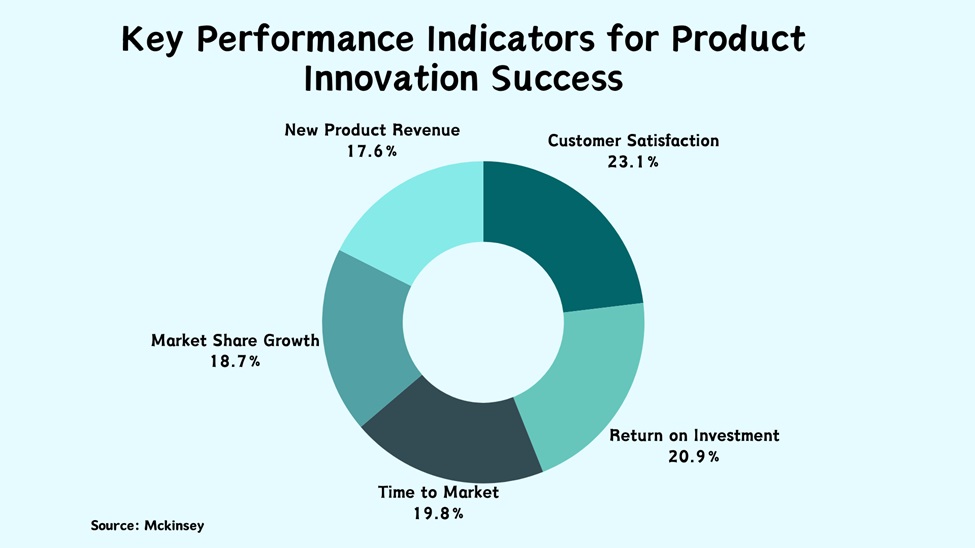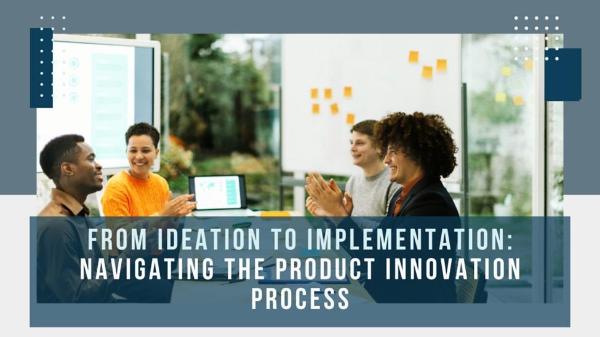From Ideation to Implementation: Navigating the Product Innovation Process
In today's fast-paced and ever-evolving business landscape, innovation is the key to staying ahead of the curve. From conceptualizing groundbreaking ideas to successfully bringing them to market, the product innovation process is a complex journey that requires careful navigation. According to a recent study, companies that prioritize innovation generate 20% higher revenue growth than their industry peers.
In this comprehensive guide, we'll explore the essential steps involved in transforming creative sparks into market-ready products that resonate with customers and drive business growth.
I. Understanding the Innovation Ecosystem
A. Market Analysis: Incorporating Insights for Informed Decisions
Before embarking on the new product innovation process, it's crucial to gain a deep understanding of the market landscape. Market analysis for product innovation plays a pivotal role in shaping product innovation by uncovering trends, identifying gaps, and discovering opportunities. Marketers actively research their audience, emphasizing the prevalence and significance of this practice.
Analyzing market data, consumer behaviors, and industry dynamics allows organizations to make informed decisions about the types of products or services to develop and how to position them effectively. This invaluable knowledge empowers companies to create solutions that address real-world problems and aligns with evolving customer needs.
B. Competitive Landscape Assessment: Learning from Industry Dynamics
In addition to market research, a comprehensive understanding of the competitive landscape is essential for driving successful innovation. Studying competitors can provide valuable insights into emerging trends, potential threats, and areas for differentiation, enabling organizations to develop unique offerings that stand out in a crowded marketplace.
C. Customer Insights: Building Products with Purpose
At the heart of any successful innovation lies a deep understanding of customer needs and preferences. By actively soliciting feedback from target audiences through surveys, focus groups, or social media interactions, companies can gain a profound understanding of pain points, desires, and expectations.
This customer-centric approach not only informs the ideation process but also ensures the final product resonates with its intended audience, increasing the likelihood of success.
II. Ideation Phase: Generating and Selecting Ideas
A. Brainstorming Techniques: Cultivating Creativity
The ideation phase is where the magic happens - where creative sparks ignite and innovative concepts take shape. To fuel this process, organizations must embrace a culture of creativity and explore various brainstorming techniques and ideation techniques.
B. Prioritization Methods: Focusing Efforts for Maximum Impact
With a multitude of ideas on the table, it's crucial to prioritize those with the greatest potential for success. Evaluating and selecting the most promising concepts is a critical step in the product innovation process.
C. Prototyping: Testing Ideas for Viability
Prototyping for product development plays a pivotal role in the innovation process by enabling organizations to test and refine ideas before committing significant resources to development. This iterative approach not only mitigates risks but also ensures that the final product meets or exceeds customer expectations.
III. Development Stage: Bringing Ideas to Life
A. Agile Development: Adapting to Change with Agility
In the dynamic world of product development, the ability to adapt to changing market conditions and customer feedback is essential. Agile development methodologies empower teams to respond swiftly to evolving requirements and pivot as necessary.
B. Cross-functional Collaboration: Harnessing Collective Intelligence
Successful product innovation requires the collective expertise and diverse perspectives of cross-functional teams. Fostering an environment of interdisciplinary collaboration is paramount for enhancing the quality of the final product, promoting knowledge sharing, and fostering a culture of continuous learning and improvement.
C. Testing and Refinement: Iterating Towards Excellence
Throughout the development process, iterative testing and refinement are critical to ensuring the product meets the highest standards of quality and user satisfaction. This ongoing cycle of improvement not only enhances the final product but also instills a culture of continuous improvement within the organization.
IV. Implementation and Launch
A. Go-to-Market Strategy: Seizing Opportunities for Success
After months of ideation, development, and refinement, the moment of truth arrives – the product launch. However, a successful launch requires a well-crafted go-to-market strategy. A comprehensive go-to-market plan should encompass elements such as positioning, pricing, promotional activities, and distribution channels.
B. Scalability Considerations: Planning for Sustainable Growth
As products gain traction in the market, it's essential to anticipate and plan for potential growth and scalability requirements. The statistic that 69% of marketers plan to increase investment in video marketing highlights the need for scalable solutions and infrastructure.
Organizations should assess factors such as manufacturing capabilities, supply chain management, customer support resources, and technological infrastructure to ensure they can meet increasing demand without compromising quality or customer experience.
C. Monitoring and Evaluation: Tracking Performance for Continuous Improvement
Even after a successful launch, the product innovation journey doesn't end. Continuous monitoring and evaluation of product performance post-launch are crucial for identifying areas for improvement and maximizing the return on investment. Look at the data below that shows the KPI for product innovation success:

Data Source: McKinsey & Company
The statistic on content marketing's impact on sales underscores the importance of tracking performance metrics.
Conclusion
In today's rapidly evolving business environment, product innovation is not a luxury but a necessity for organizations seeking long-term success and growth. By understanding the innovation ecosystem, embracing creative ideation techniques, adopting agile development methodologies, and executing a well-crafted go-to-market strategy, companies can navigate the product innovation process with confidence and deliver solutions that resonate with customers.
However, the journey doesn't end with a successful launch. Sustaining innovation requires a commitment to continuous improvement, adaptation, and customer-centricity. By fostering a culture that encourages risk-taking, rewards creativity, and empowers employees to contribute ideas, organizations can stay ahead of the curve and maintain a competitive edge.
Frequently Asked Questions
1. How do you ensure that the innovative ideas generated align with market needs and customer preferences?
Conduct thorough market research, establish customer feedback loops, and engage target audiences through surveys, focus groups, and usability testing. Prototyping and concept validation also help mitigate risks by testing early iterations with potential customers.
2. What are some common challenges faced during the implementation phase, and how can they be overcome?
Common challenges include resource constraints, technological limitations, and resistance to change. Overcome them through cross-functional collaboration, agile methodologies, and investing in employee training and development.
3. How can companies sustain innovation beyond the initial product launch?
Sustain innovation by soliciting customer feedback, analyzing product performance data, staying attuned to market trends, encouraging risk-taking, rewarding creativity, and empowering employees to contribute ideas.

